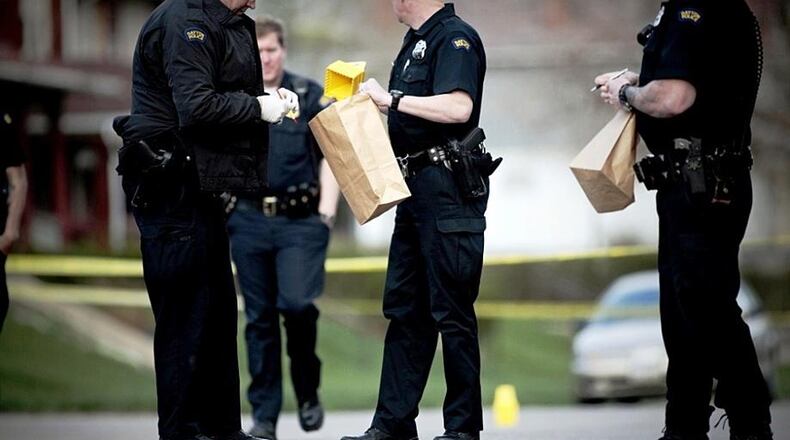Citizens claim the gunshot-detection system is an “unnecessary toy” that wastes money, contributes to over-policing and does not make neighborhoods any safer.
“The data defending the use of ShotSpotter is widely contested, and the questions and concerns raised by the community remain unanswered,” according to the online petition supported by Black Lives Matter Dayton and Dayton / Miami Valley DSA (Democratic Socialists of America).
But police officials say the technology has helped develop leads, catch criminals, solve crimes, and locate forensic evidence and wounded shooting victims.
“This is impacting people’s lives for the better,” said Dayton police Lt. Col. Matt Carper, assistant chief.
On Wednesday, the Dayton City Commission voted 4-1 to approve a $390,000 extension agreement with ShotSpotter for use of its technology and services through the end of 2022.
The city’s original $205,000 contract with the company was approved in July 2019.
Dayton City Commissioner Darryl Fairchild cast the only vote against the agreement.
The city’s ShotSpotter system has 15 to 25 acoustic sensors per mile in a three-mile area around North Main Street and Salem Avenue.
The system listens for gunshot sounds and sends police dispatchers alerts when it detects them.
The system is designed to pinpoint the location of the sounds and dispatch police officers to those areas.
Commissioner Fairchild said next year’s budget is very challenging and without knowing what programs will be funded or cut it does not make sense to prioritize ShotSpotter. He said the city doesn’t know if it will be able to fund other gun-violence reduction strategies, like a public health program piloted last year.
Fairchild said he thinks there’s a disconnect in using the city’s Community Development Block Grant funds for this program when they are designed to provide investment in local neighborhoods.
Other critics say the ShotSpotter system is an unnecessary form of surveillance in predominantly Black neighborhoods that community members have not asked for and do not want.
Some people have raised privacy concerns. Others say the alert system can lead to bias and other problems because officers are dispatched to areas without important contextual information, like an account of what happened or a description of possible suspects.
Critics, like Jared Grandy, say the city should put its resources toward investments that actually reflect the community’s values and help improve citizens’ health and well-being.
“West Dayton has suffered enough, and ShotSpotter is not an appropriate solution to its problems,” wrote Grandy, a member of Black Lives Matter Dayton, in a message submitted to the city.
He said the city could find better uses of its funding than to spend it on technology for which there is no evidence that it truly prevents and reduces crime.
But Lt. Col. Carper said ShotSpotter is a crime-fighting tool that can help reduce shootings and gun violence, and other cities that use the technology have seen notable reductions in criminal activities.
Police have made 27 arrests as a result of ShotSpotter alerts, recovered 34 firearms and 2,000 shell cases and discovered and aided five injured shooting victims, Carper said.
“It goes to show how necessary a response like this is in a location with a high level of gun violence,” Carper said.
The recovered bullet casings are entered into a nationwide information system to compare the ballistics and try to develop leads and identify crime suspects, Carper said.
Between December 2019 and November of this year, the ShotSpotter system led to 1,537 calls for service for gunfire, according to police data.
By comparison, citizens in the area only reported gunfire 183 times to police (12% of the incidents recorded by the system), police said.
Carper said the CDBG funding could only be used for capital projects and not for personnel, meaning they couldn’t use the money to hire an extra officer to patrol the impacted areas.
Mayor Nan Whaley said dispatching officers to areas where there is gunfire helps combat dangerous criminal activities and shows residents the city and police care about improving public safety in their neighborhoods.
About the Author

